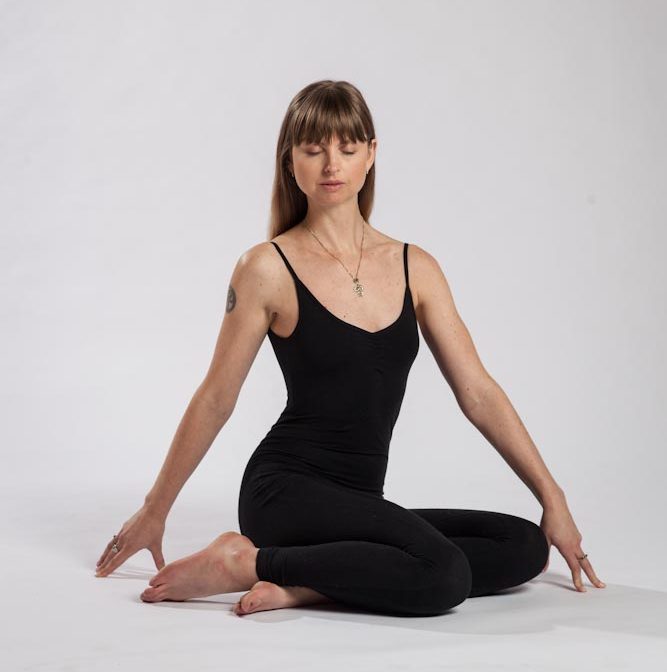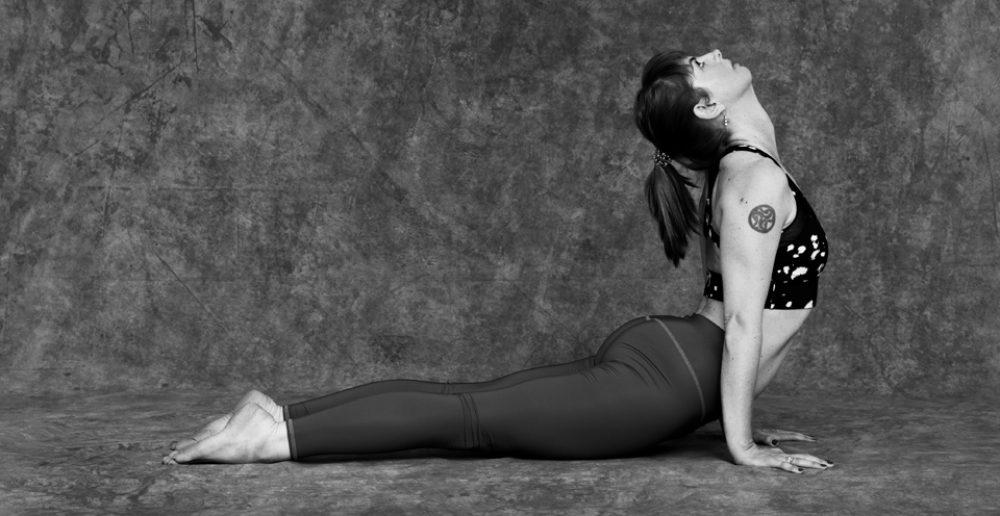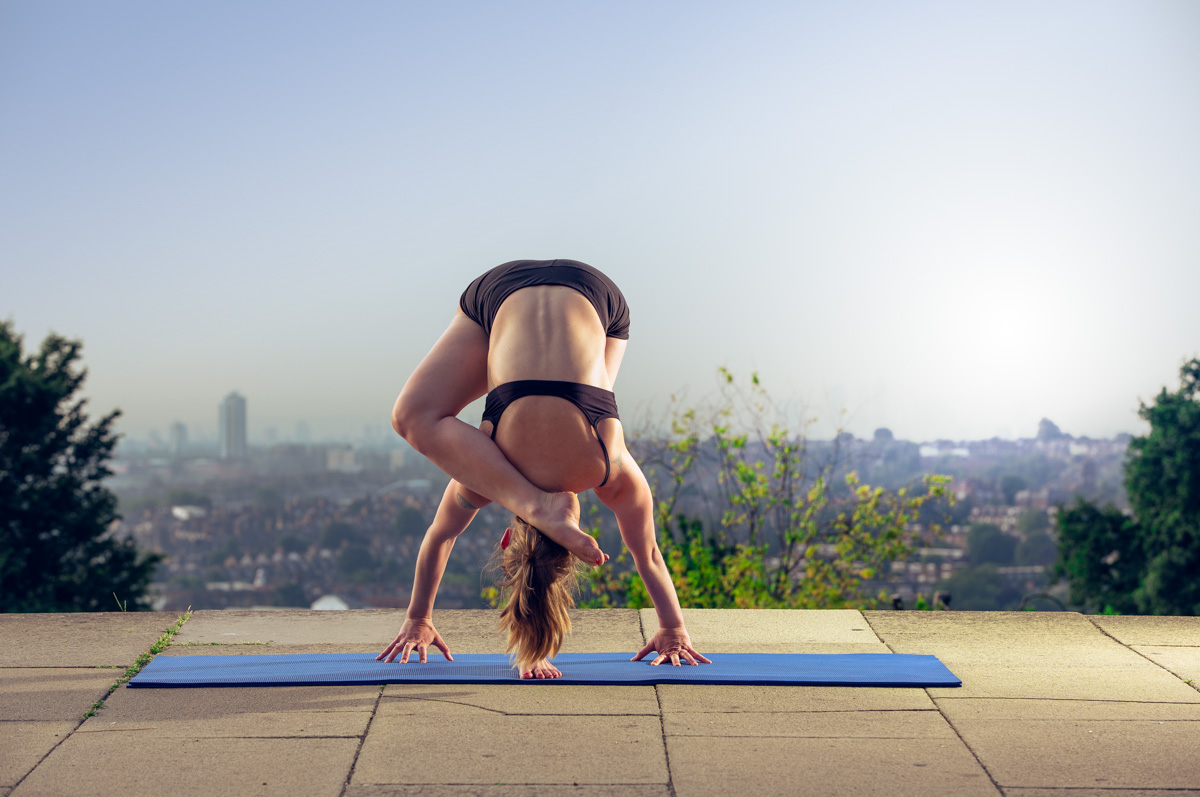What is Functional Yoga, and Why I am Teaching it.
The pictures depict how I used to practice (left image) and how I practice now (right two images).
I would describe functional yoga as a movement practice that has kept some elements of yoga (perhaps you will notice some classical postures) and integrated elements of FRC (mobility, strength at end range, self assessment), and calisthenics (bodyweight strength training, and the important aspect of play). At least this is how I would describe what I am teaching.
Having taught yoga for almost 20 years now, I have seen many things change in the profession, not just how we teach but the beliefs and motivations behind what and why we are teaching. Edging towards a more science based approach, as new knowledge and research into biomechanics and neuroscience becomes available, plus a separation off of the spiritual aspects of yoga that I used to see combined a lot into teaching when I first started.
When I started teaching yoga in 2002, what I learnt was presented as an ancient system of postures and breathing techniques that were heavily influenced by the ancient yoga scriptures, such as the Yoga Sutras of Patanjali, and that yoga dated back to the sophisticated Indus Valley civilisation 5,000 years ago in modern day Pakistan. It had an inherent spiritual element, a notion of worship and devotion through practice, and the main focus being working with the energy in the body (prana) and its capacity to heal and enhance wellbeing. James Nestor explores prana in his book ‘Breath, the new science of a lost art’ (2020), and I do believe there is wisdom in the concept of prana:
“In every culture and in every medical tradition before ours, healing was accomplished by moving energy….The moving energy of electrons allows living things to stay alive and healthy for as long as possible. The names may have changed – prana, orenda, chi’i, ruah – but the principle remained the same” (Nestor, J. Breath: The New Science of a Lost Art. 2020. p.194).
However, with many yoga teachers now taking FRC trainings, I wonder if yoga is developing into 1) the physical practice based on scientific research, 2) breath work based on scientific research, and 3) the other styles (less physically based) that focus on prana such as yin and gong bath, yoga nidra, and perhaps certain types of classical yoga such as kundalini, kriya yoga, etc that I am less familiar with (please comment below if you would like to elucidate on these).
Being predominantly an ashtanga (Authorised L2) and Iyengar influenced teacher, Mark Singleton’s book Yoga Body, The Origins of Modern Postural Yoga (2010) was a fantastic grenade into our assumptions about yoga. Setting out his research that the postural yoga I was practising was merely 100 or so years old. His exposition of how modern yoga is an interdisciplinary construction is fascinating, taking us through history and geography from Swedish gymnastics and bodybuilding, to the underground exercises practised by the resistance against the British Raj, to the Theosophical Society (1875) in Europe and their patronage of Vivekananda, the first Indian yogi to lecture widely in the West, and how these strands gathered together to form what we practice today.
Since Singleton’s book, personally it has made sense to separate the physical practice as something more akin to exercise and to approach it in the most holistic way, focussing on overall health and functionality of the physical body (which absolutely has an impact on psychological wellbeing) – but a very different mindset to practising 2nd or 3rd series in ashtanga yoga, where the focus was on getting your leg behind your head or arm balancing in ever more complicated positions while believing the practice was cleansing oneself of samskaras (impressions/habitual psychological patterns). This way of practising was extremely FUN, but was not functional or sustainable for the overall health of my body in the long term, with many teachers suffering ongoing injuries, due to lack of knowledge on assessing movement patterns in order to iron out compensations and build strength progressively to distribute load evenly throughout the body to execute these complex movements. In terms of samskaras, I think any type of yoga certainly increases one’s self awareness and interoception, however I’m not sure how much the physical practice changes psychological patterning, for this I think talking therapy in conjunction with a movement practice is optimal.
I consider working with prana extremely helpful but I see it as a different practice now, and I practice and teach it mostly through pranayama (breath work). There seems to be a growing interest in the fitness arena into ‘functional breathing’ especially in terms of athletes and improved performance. Spearheaded by Patrick McKeown (The Breathing Cure, 2021) and explored by James Nestor, breathing practices are also gaining increasing public awareness due to scientific validation and advocacy by the NHS. The ancient art of breathing has become a legitimate way to self regulate stress and emotional instability, which is nothing short of brilliant. This, in fact is what Patanjali was teaching, having described asana (yoga posture) only once in the Sutras as a steady and comfortable ‘seat’ for the other pranic and inner work.
What I notice happening with Functional Yoga, which I have seen emerge more recently, is a new perspective on why we practice. The emphasis is on self assessing the state of the body in the moment, and ironing out unhelpful patterns in the body (such as bad posture), and building exposure and resilience, to create more optimal movement patterns to benefit overall movement in every day life as well as increase performance in daily activities, sports or exercise.
It is yoga shapes, with a functional approach. So it is slower, more precise, there are isolations and activations. The logic behind it is to prepare the body progressively for more complex movements, whether that is the fun yoga stuff for eg handstand and bakasana/crow pose, or something more simple like downward dog, which would be broken down in functional yoga into three components: overhead extension (the arms), hip flexion, and ankle dorsiflexion. All of these components can then be prepared for with drills that prepare the body so that when you get to down dog, the body recognises what is being asked of it, and can execute the movements more safely by evenly distributing the load, and with the joints having the required range of motion and strength at the range required to perform the pose safely without risk of injury.
The ‘functional’ aspect comes from Functional Range Conditioning (FRC), a growing school of movement rooted in science and ‘living anatomy’ and the notion that all cells in the body are interconnected, (ie if we have a movement impairment here, or move something there, the whole system is affected). It focusses on increasing range of motion (mobility) in an active way through controlled movement and isometric holds, and aims at building strength at end range rather than passive flexibility which is more usual in a yoga class. The science behind this is partly based on working with the nervous system to train the body to adapt, and in overall joint and mobility health of the body. I also think principles from calisthenics are having an influence on this emerging type of ‘functional’ yoga, as what we can learn from calisthenics in regards to bodyweight strength training is a systematic approach that applies well to the more complex moves we find in yoga, with many yoga teachers training in calisthenics to nail handstand and other complex yoga postures.
In other words, the emphasis is no longer on the esoteric energetic explanations and/or the hierarchical system, ie do what your teacher taught you down through the lineage (parampara, where the guru cannot be challenged), but rather on exploration, curiosity into our own movement patterns, and learning from peers in a more horizontal way. And most importantly, on thinking: what can I do for my body that will help me to move better, feel better, bullet proof myself against injury, and increase my capacity to do the other things I enjoy in life, such as being active be that sports, the gym, or playing with my kids, while being challenged in a way that makes sense, and allows me to enjoy play through movement? Play is such an important part of the human psyche and psychological health, but that is another post.





